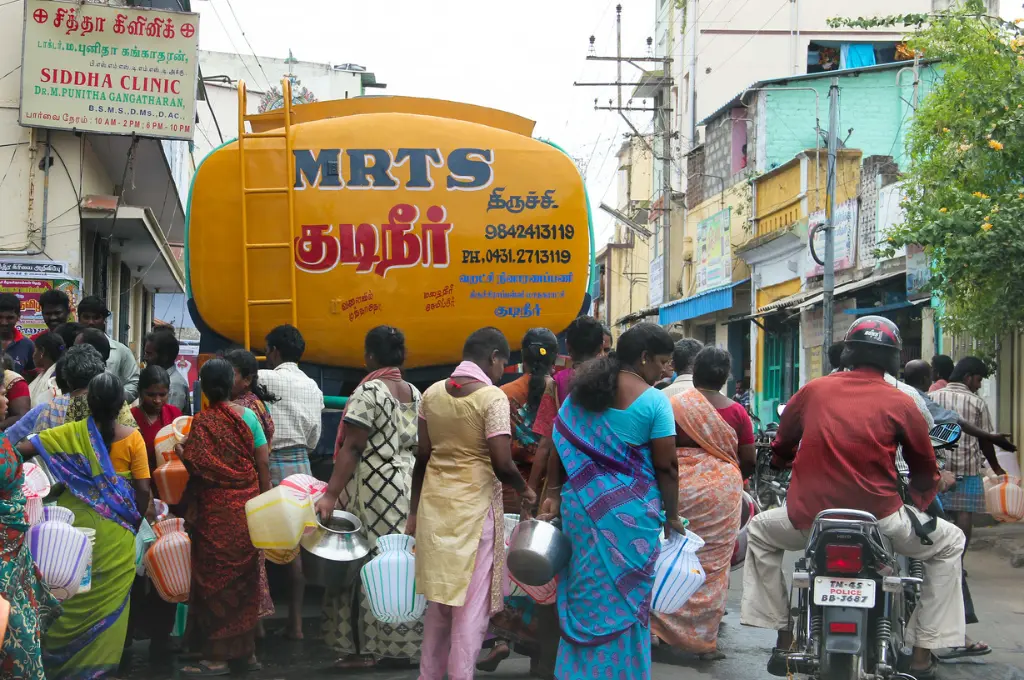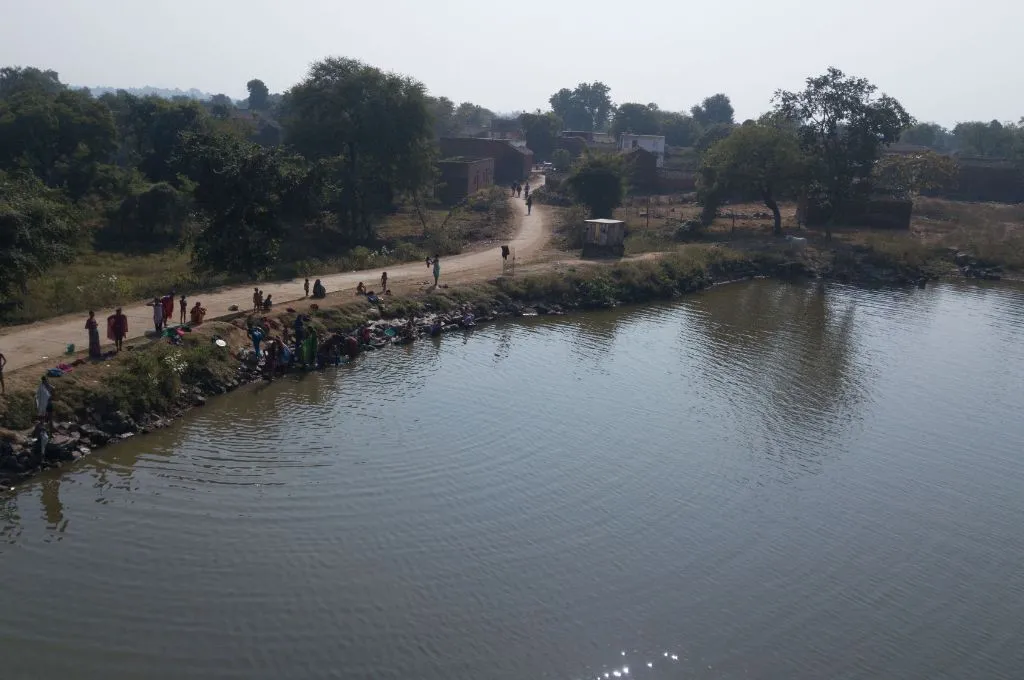India’s flagship sanitation programme, Swachh Bharat Mission (SBM), highlights the importance of both latrine use, and ‘safe and proper disposal’. Since most of urban India is not connected to sewers, the SBM recommends that cities work towards technological, financing, and governance initiatives that would ensure safe faecal sludge management. In practice, this refers to mechanical (that is, truck-and-hose) sludge removal as opposed to the now-illegal manual method of emptying toilet pits.
But, how do cleaners live and work; what do their days and nights demand of them; and to what extent does their work rely on India’s age-old caste system on which SBM policies are silent? What, in other words, does the ‘back-end’ of Swachh Bharat look like in an Indian city?
On this World Toilet Day, we trace the flow of waste from pit to dump in urban India, making visible the labour that produces the sanitary city.1

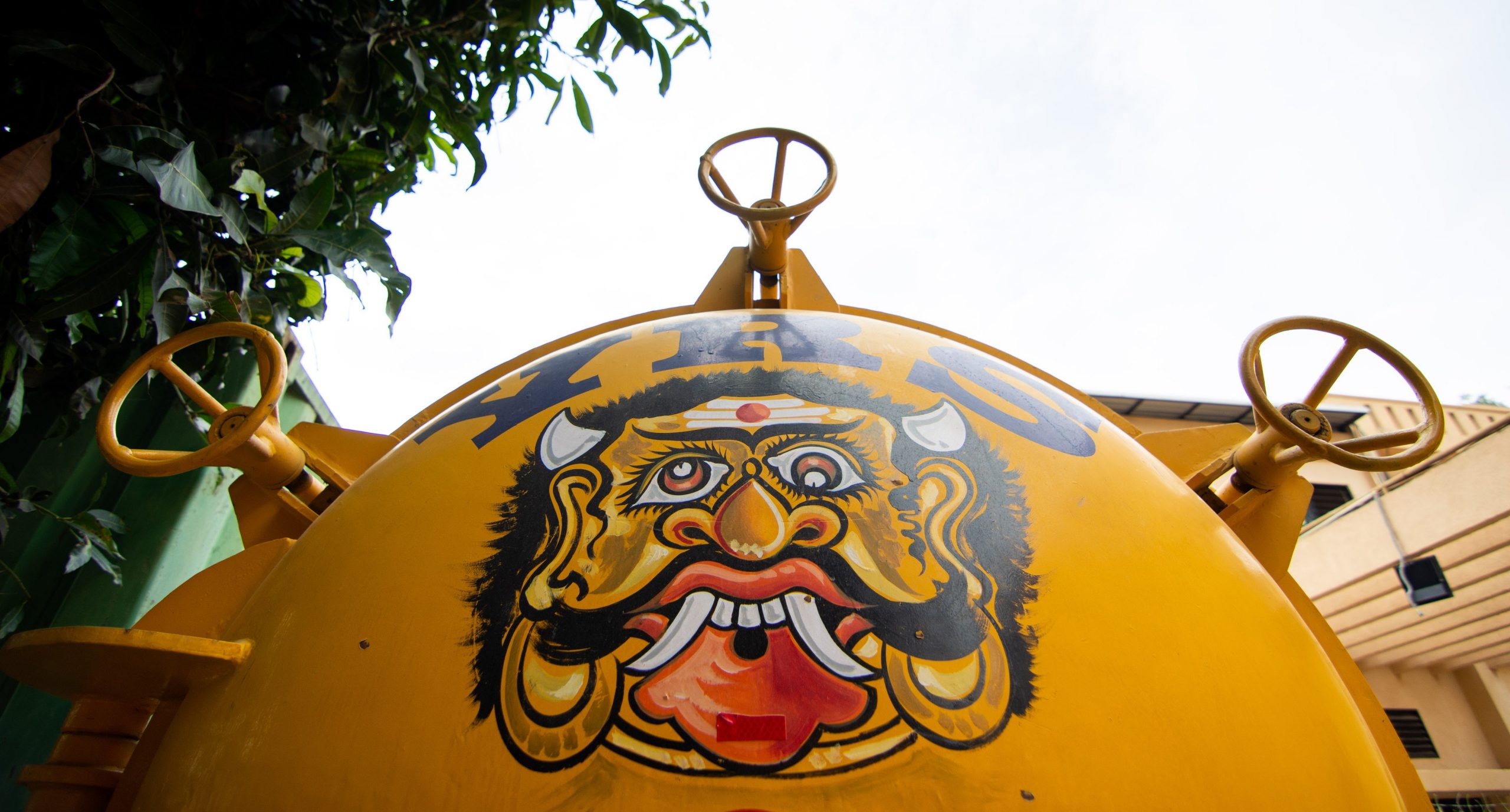
It is a typical December day in the lives of Deepak, Rajesh, and Prabhu. They empty out septic tanks and soak pits for homes and businesses. They are all from the Madiga (Dalit) community. They have been at this job for three to five years. Deepak is driving a yellow Tata 909 truck fitted with a large cylindrical tank at the back. The men are going to a home in a middle-class neighbourhood, where the toilet has backed up because the pit is full.
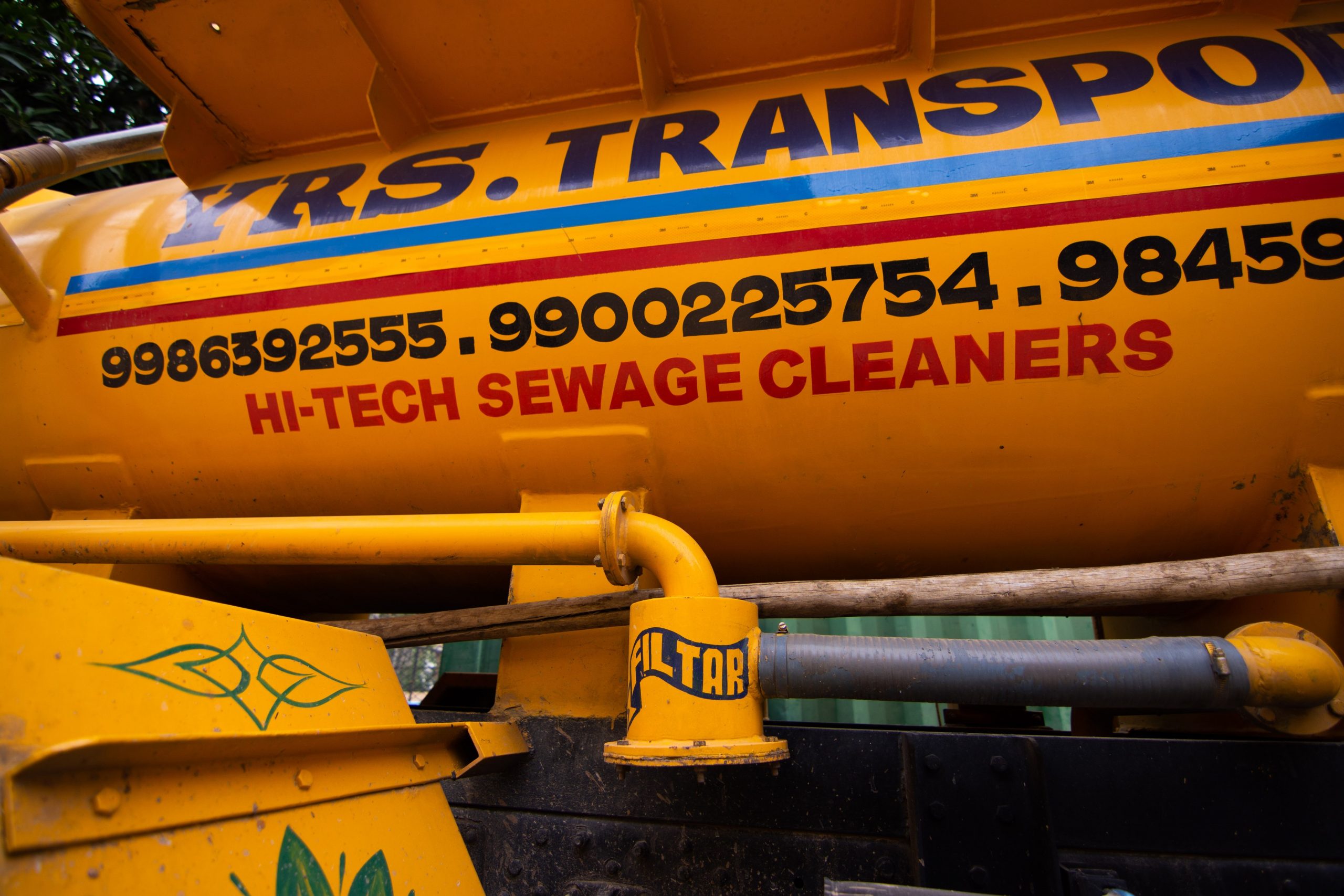
It is not hard for a homeowner to find an emptying service when he needs one. Truck owners paint the name and number of the service in large font and bright colors on the holding tanks and on city walls; the drivers carry business cards; they park at busy intersections where they can easily be seen while waiting for a service call. Flyers are distributed with the daily newspapers; the yellow pages carry advertisements.
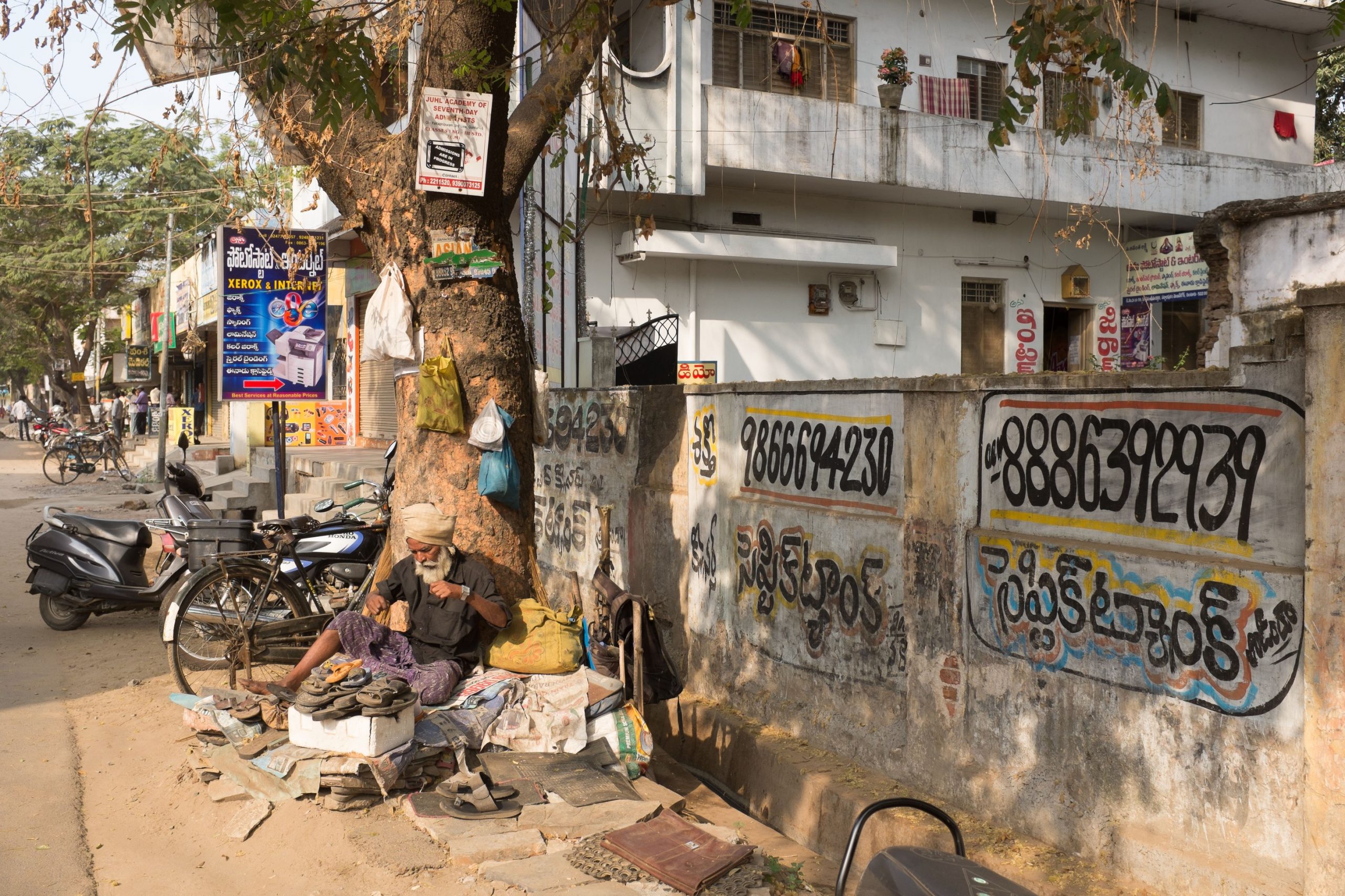
When the truck reaches the destination, Rajesh and Prabhu jump out and try to locate the pit; it is covered by a concrete slab and is under a foot of soil. They find the slab and pry it open to insert the hose. The other end of the hose is attached to a vacuum pump. On Prabhu’s signal, Deepak starts the truck engine, that gets the pump started. In a few minutes, the pit is empty. Prabhu and Rajesh work quickly to coil the hose back on the hook attached to the tank.
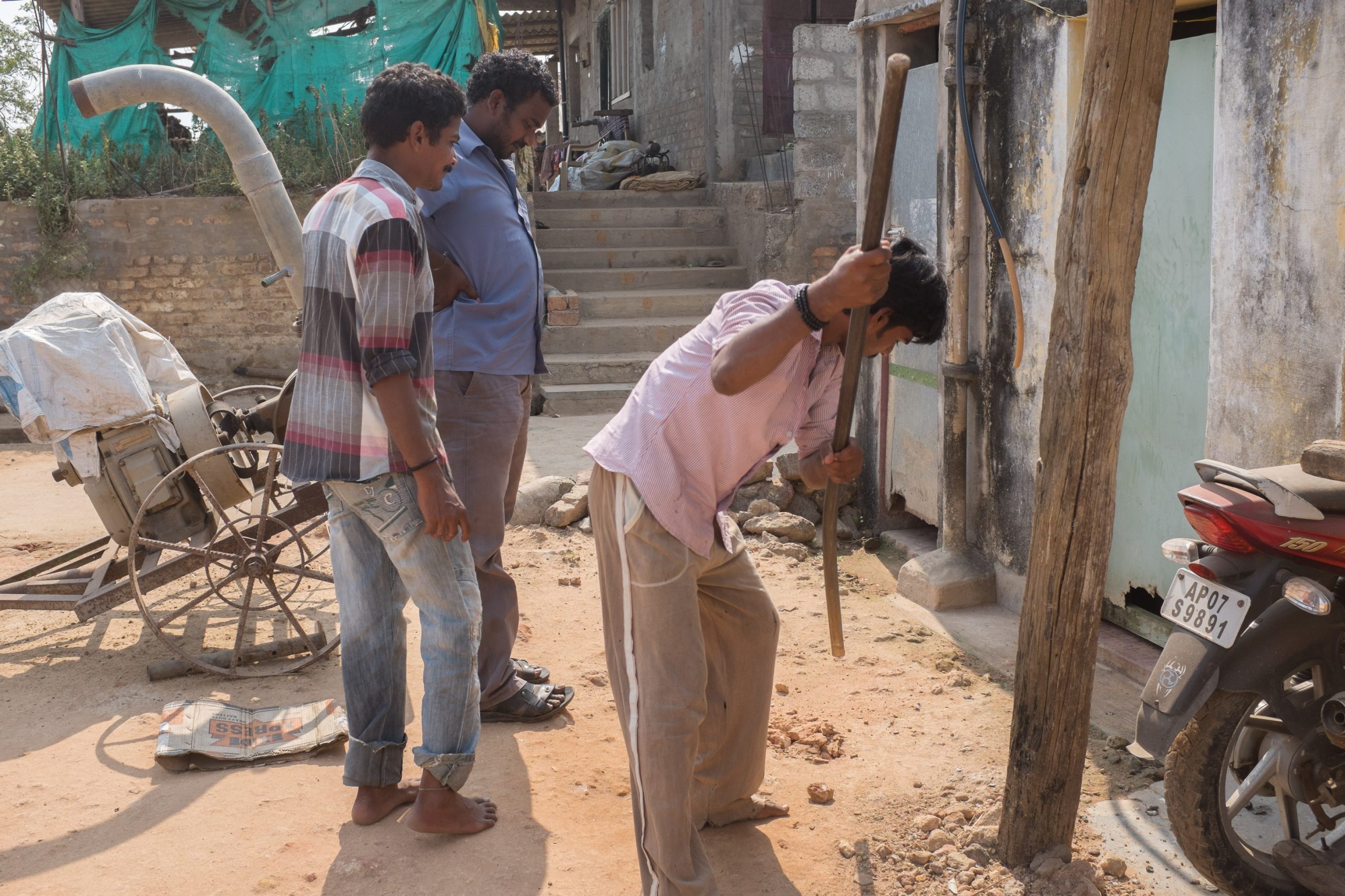
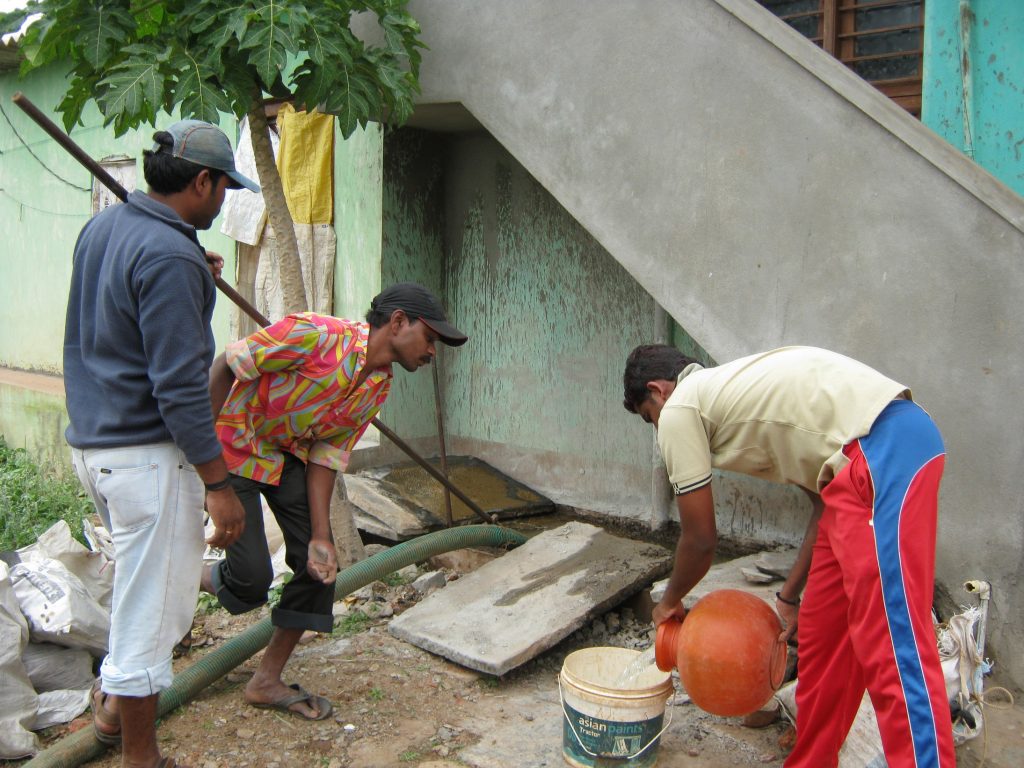
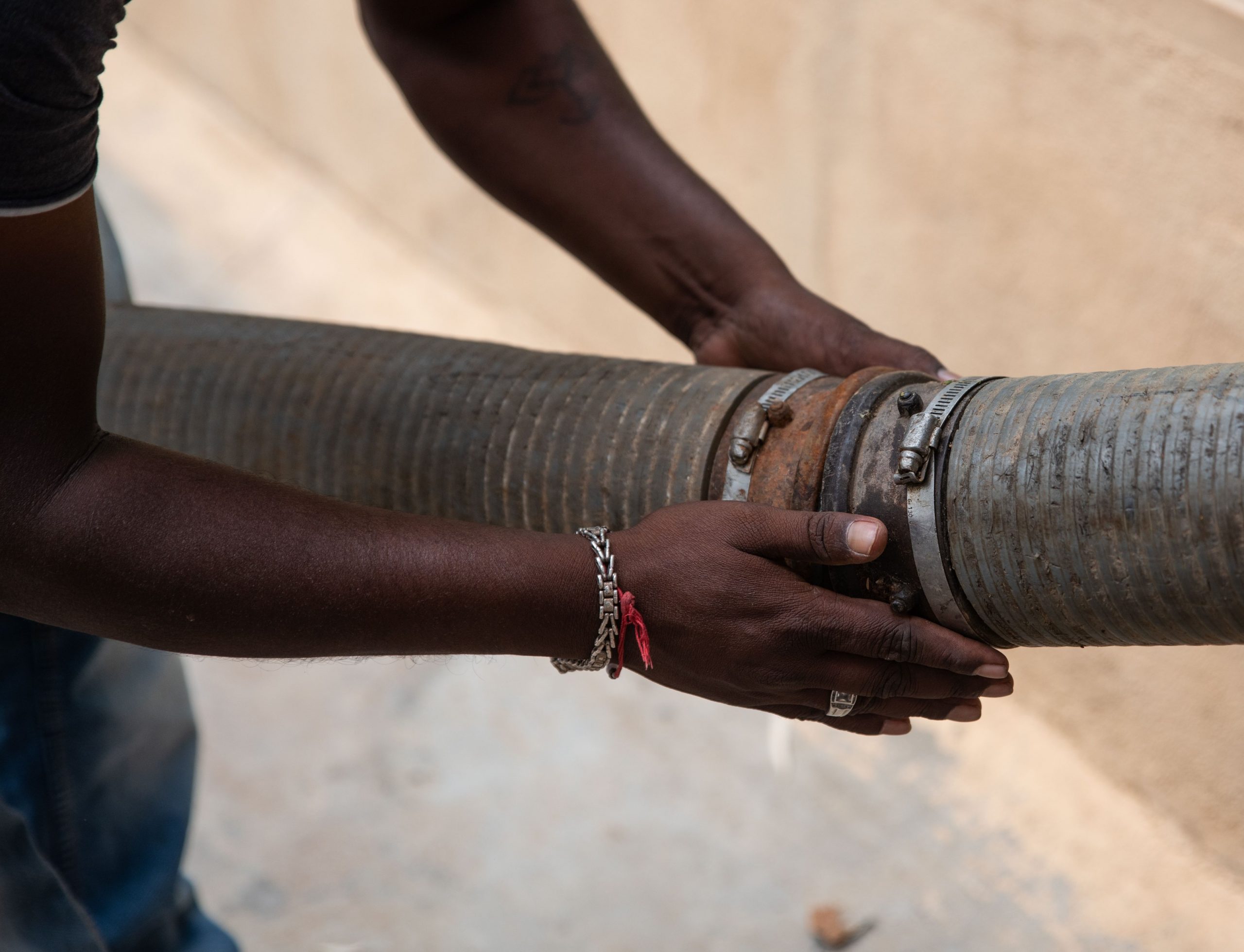
The men work with bare hands and have flip-flops on their feet. They say that the gloves and boots in the market are not designed for the kind of job they do, and they do not want to scare the public.
“We don’t wear gloves or masks. Wearing them makes people think that our work and the waste we carry in our truck is dangerous. So we act normal, as if it is harmless. That also makes dumping it a lot easier.”

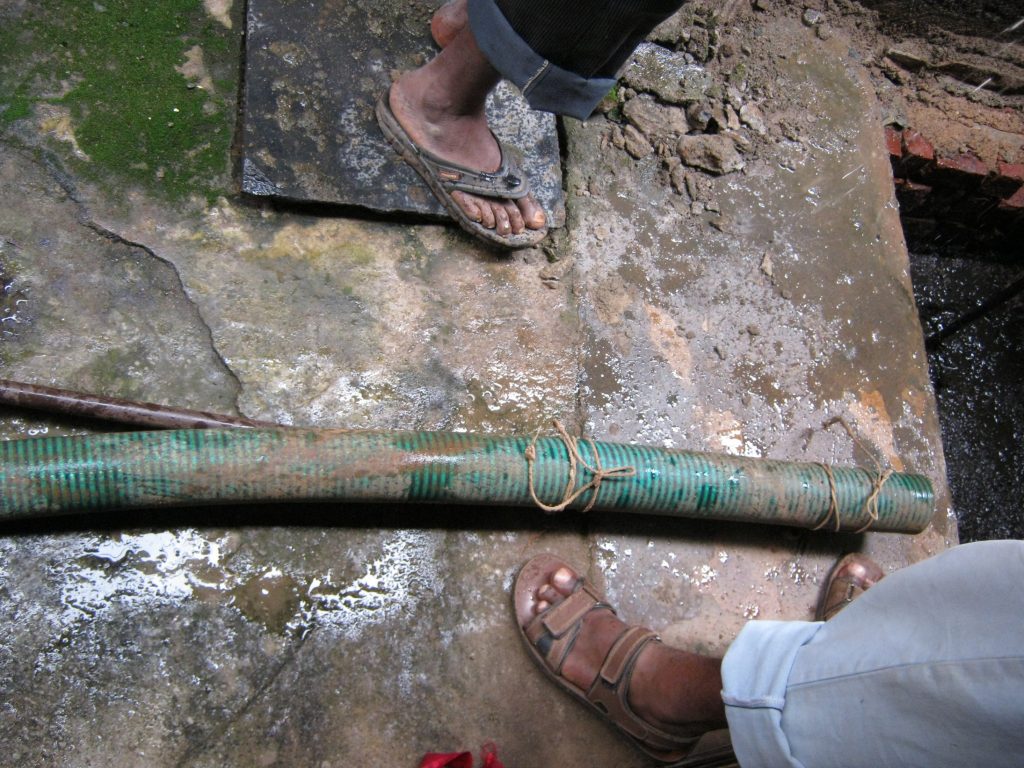
The crucial part of this business is dumping the sludge, and it is not easy to find discreet dumping spots. Deepak says that Prabhu is an expert at finding suitable spots, but Prabhu modestly demurs. He just gets lucky, he says. Open and dry plots in the periphery of the city are always good, he explains, the soil dries fast and does not hold the smell for long.
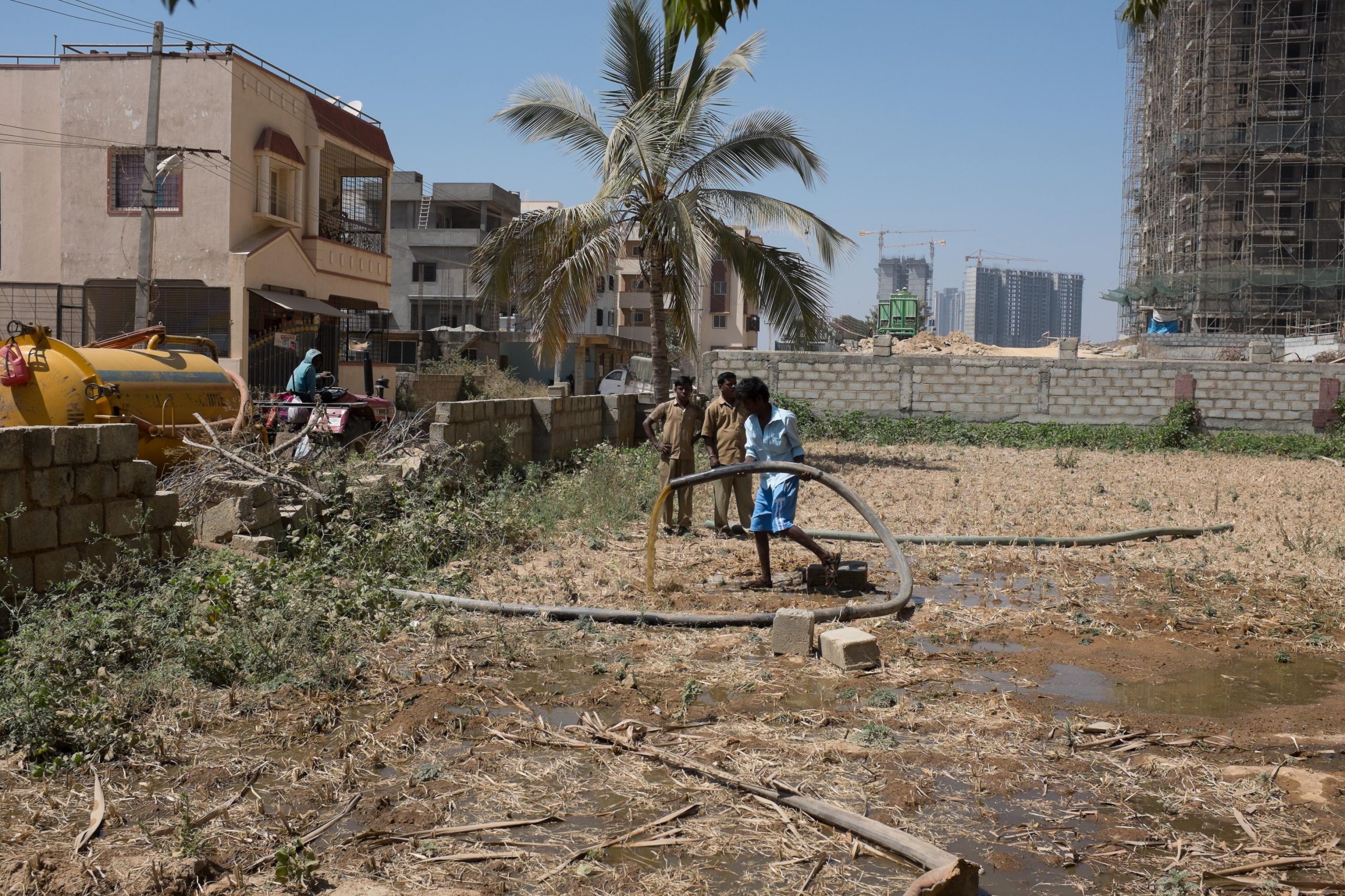
The large storm water drains that carry water out of the city, raja kaluve, already carry sewage, and the main sewer lines can also be accessed from the side alleys all over the city’s outer edges. The cleaners have to be quick if they use the main sewer lines though; they could be reported to the civic authorities. Finally, there are the farm lands. Dumping sludge on a fallow farm is a safe option for the operator. This is a good option for smaller cities like Guntur or Dharwad, but Bengaluru has urbanised so rapidly that there are not many farmlands in the periphery anymore.
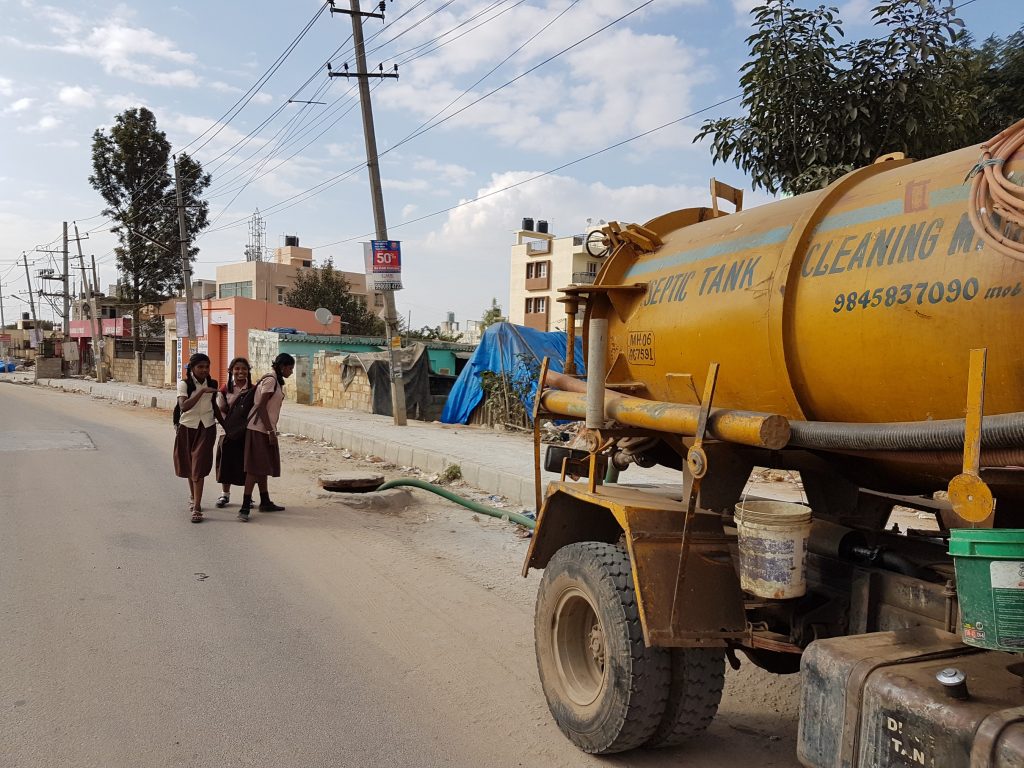
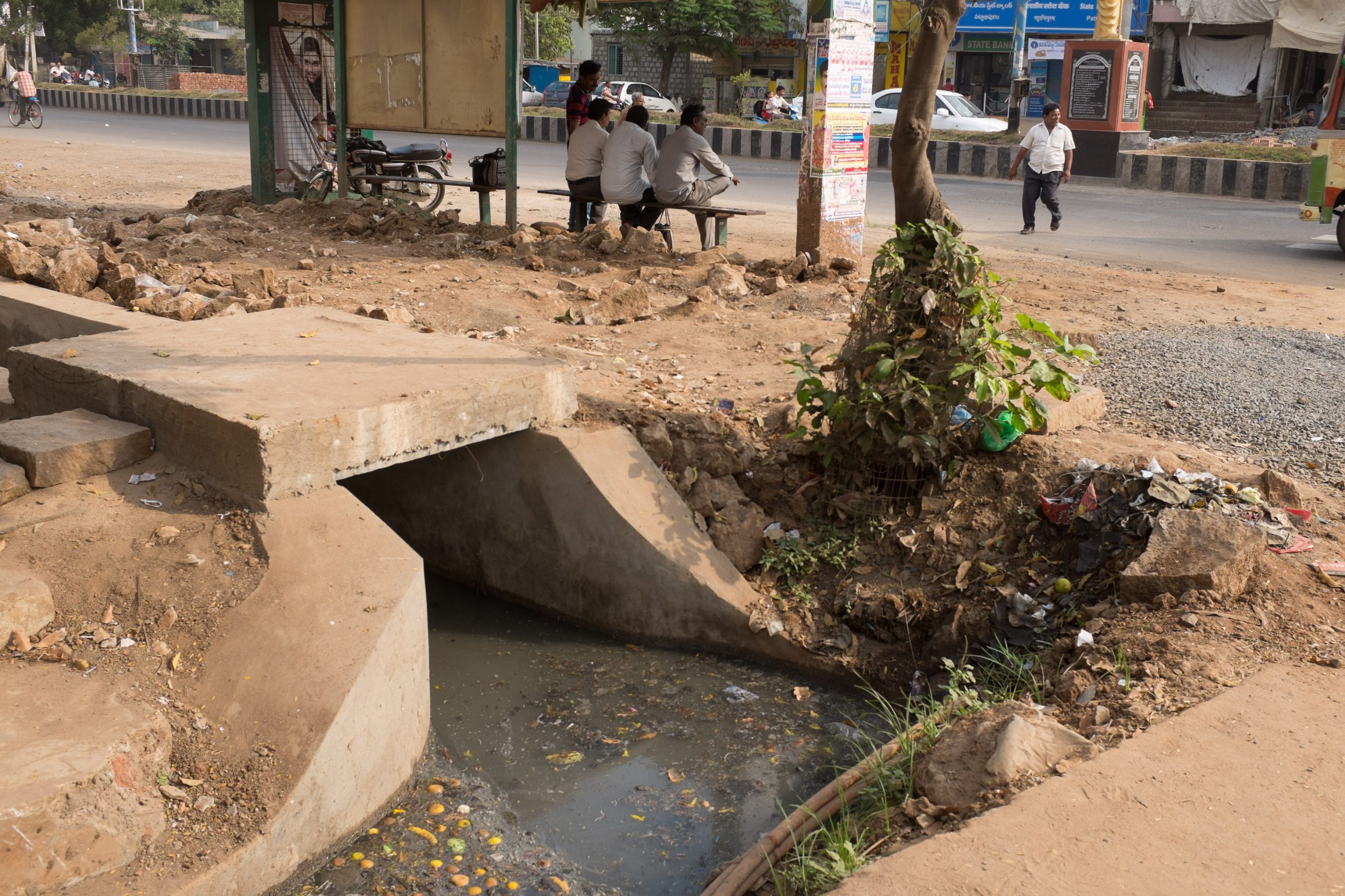
Rainy days are the best but rainy nights are even better.
“We find a road that is flooded,” says Deepak. “We park the truck, attach a short pipe to the drain valve and lower it just enough to submerge it, then we open the valve and let the sludge mix with the rainwater.”
Do people not notice the sludge coming out of the pipe?
“No, not really. The rainwater is muddy and flooded roads have slow traffic. People are completely focused on driving.”
Sometimes vigilante groups—calling themselves the “public”—take videos, curse (“they say we are soolemaklu2”), and threaten to call the police. But mostly the sanitation workers are left alone.
“Who has the patience to stop their vehicle in ankle-deep water, wade through sewage, come to us, and ask?”
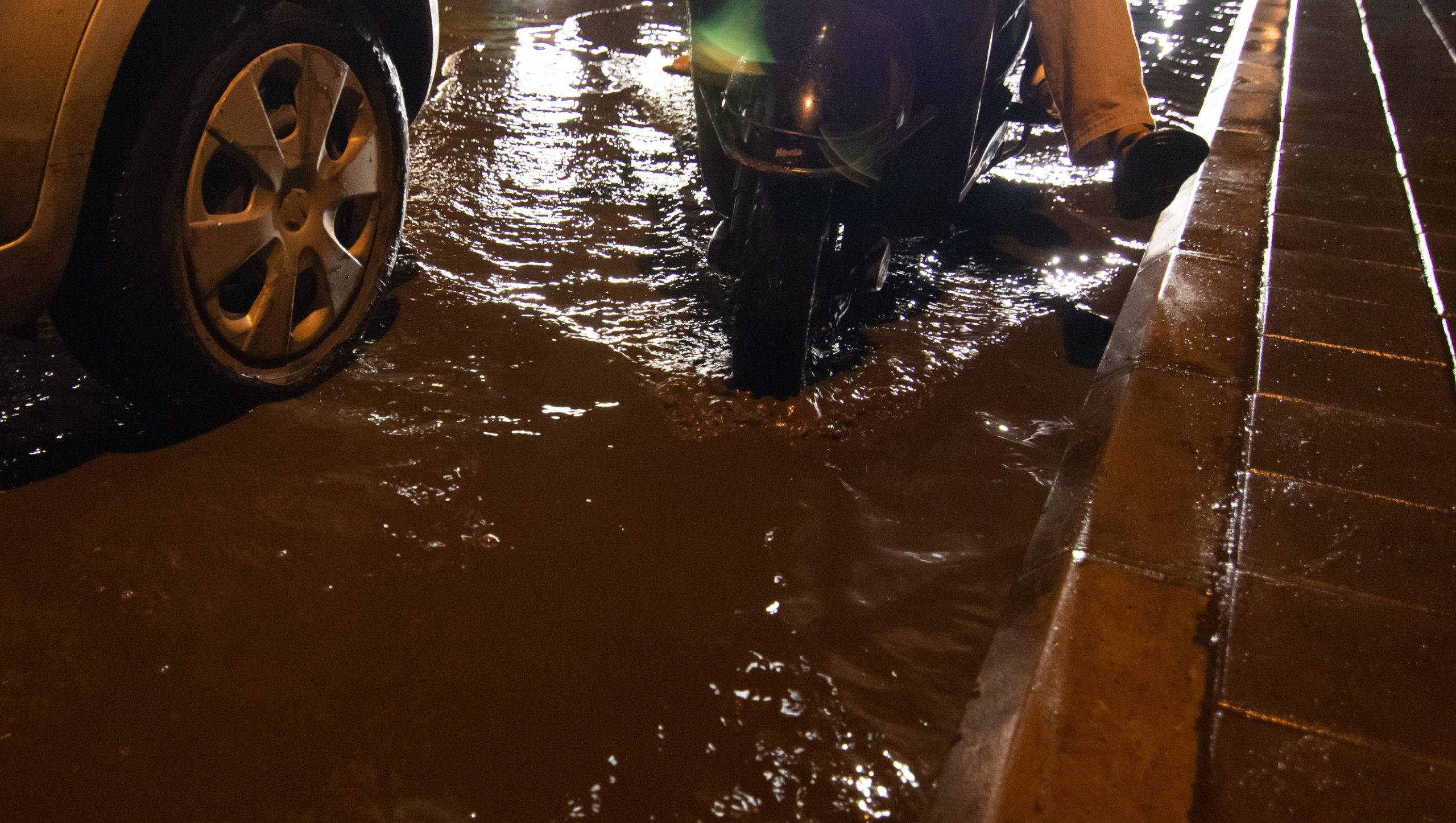
This morning it is not raining and the truck stops right in front of an open drain just outside the city. Rajesh and Prabhu connect the PVC (Polyvinyl chloride) pipe to the draining end of the tank and open the valve. In eight minutes, gravity empties the tank.
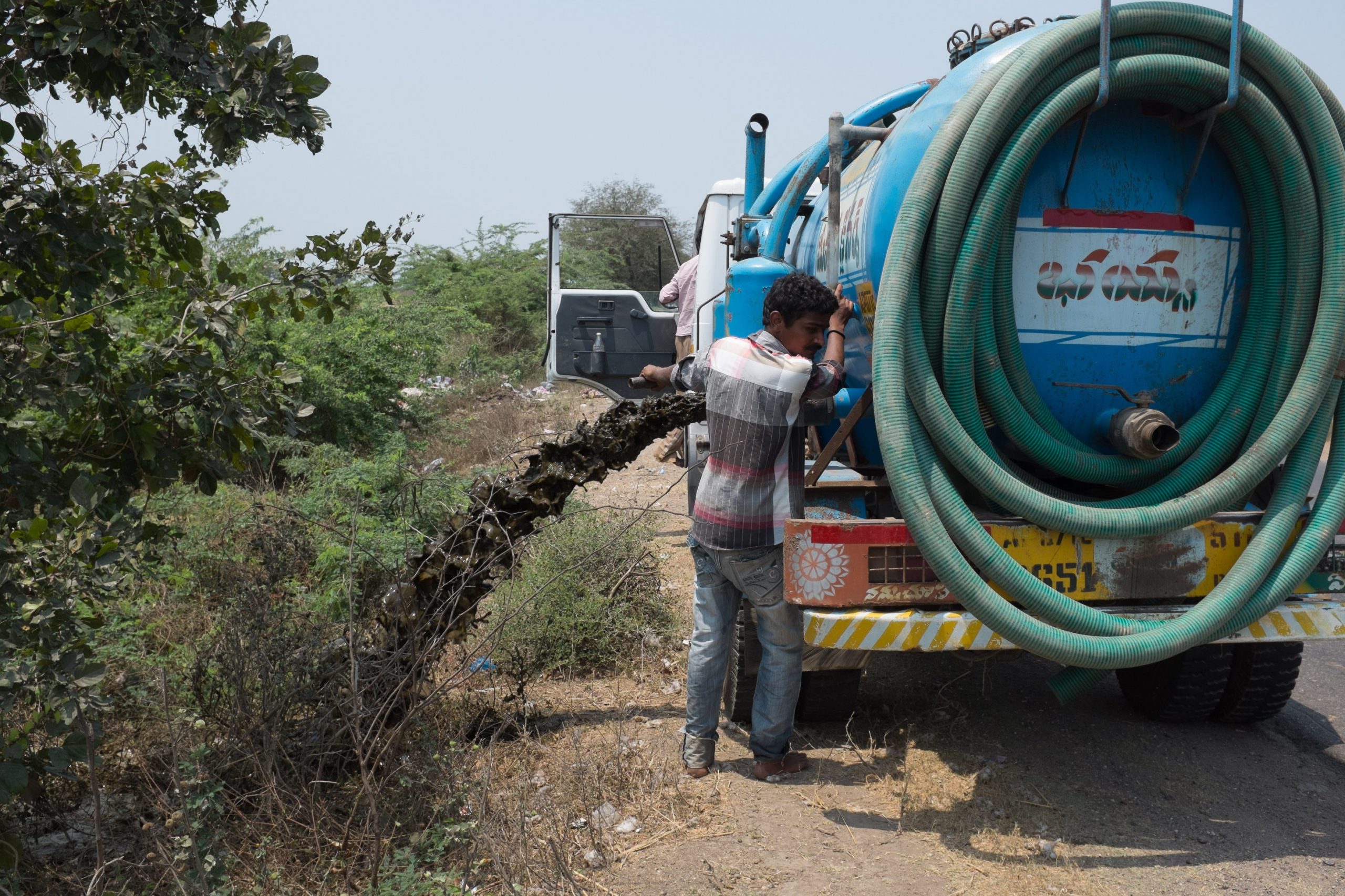
The next stop is the septic tank of one of India’s best known companies. This tank is large; 8–10 trips will be needed to empty it. If a person is not careful, they could fall into the pool of sludge and die. Cleaners do, every year. Rajesh connects the end of the pipe to the pump. Prabhu ties a five-foot-long iron bar to the end of the pipe and submerges it into the sludge. The bar acts as a mixer. Deepak starts the pump and the truck tank fills up in about 12 minutes. Then, the men are out on the road with the first load of sludge. No one has washed their hands.
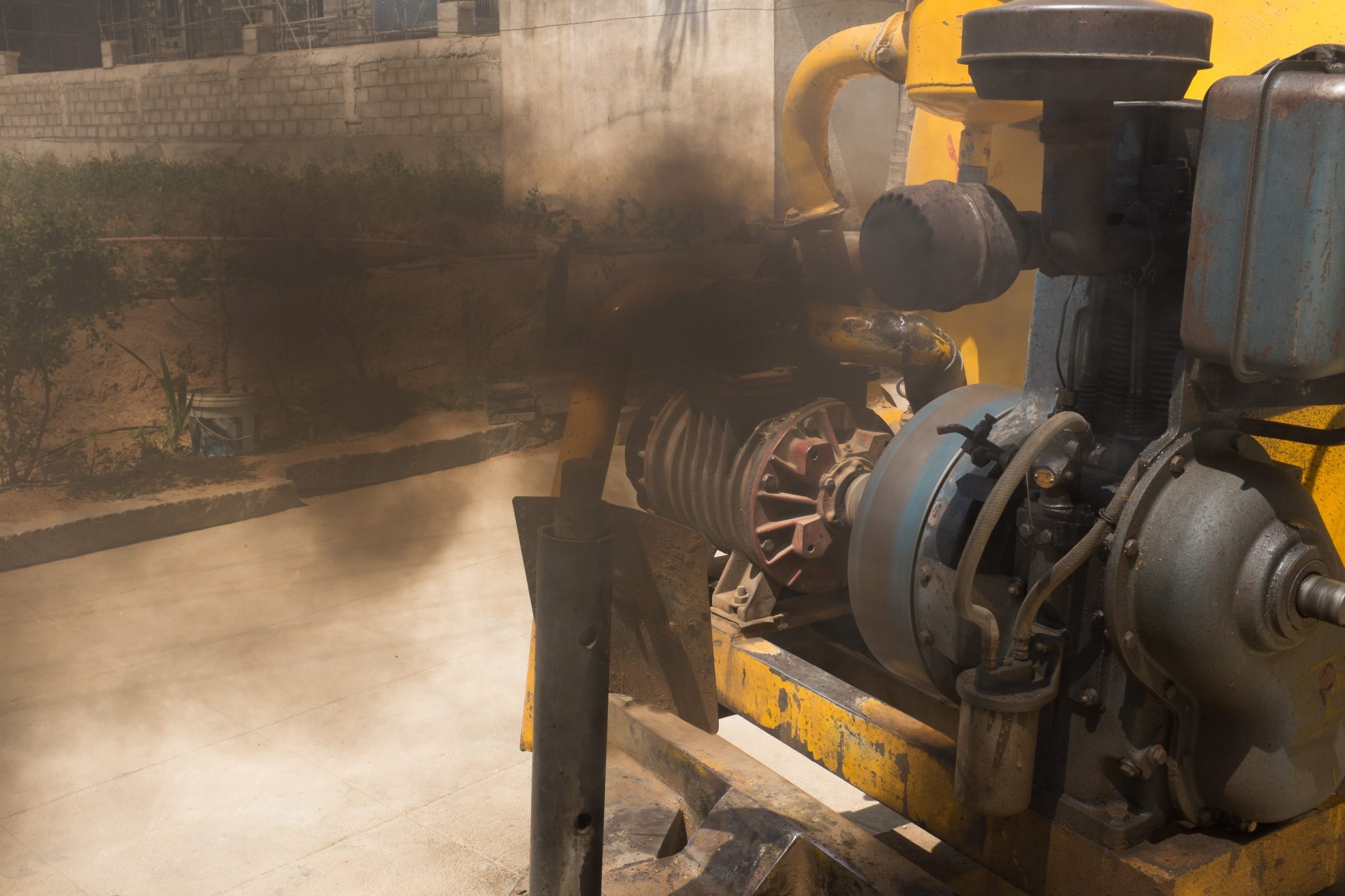
Once the third load has been dumped into an open drain, Deepak takes a swig of whiskey, and Rajesh and Prabhu share a packet of gutkha.3
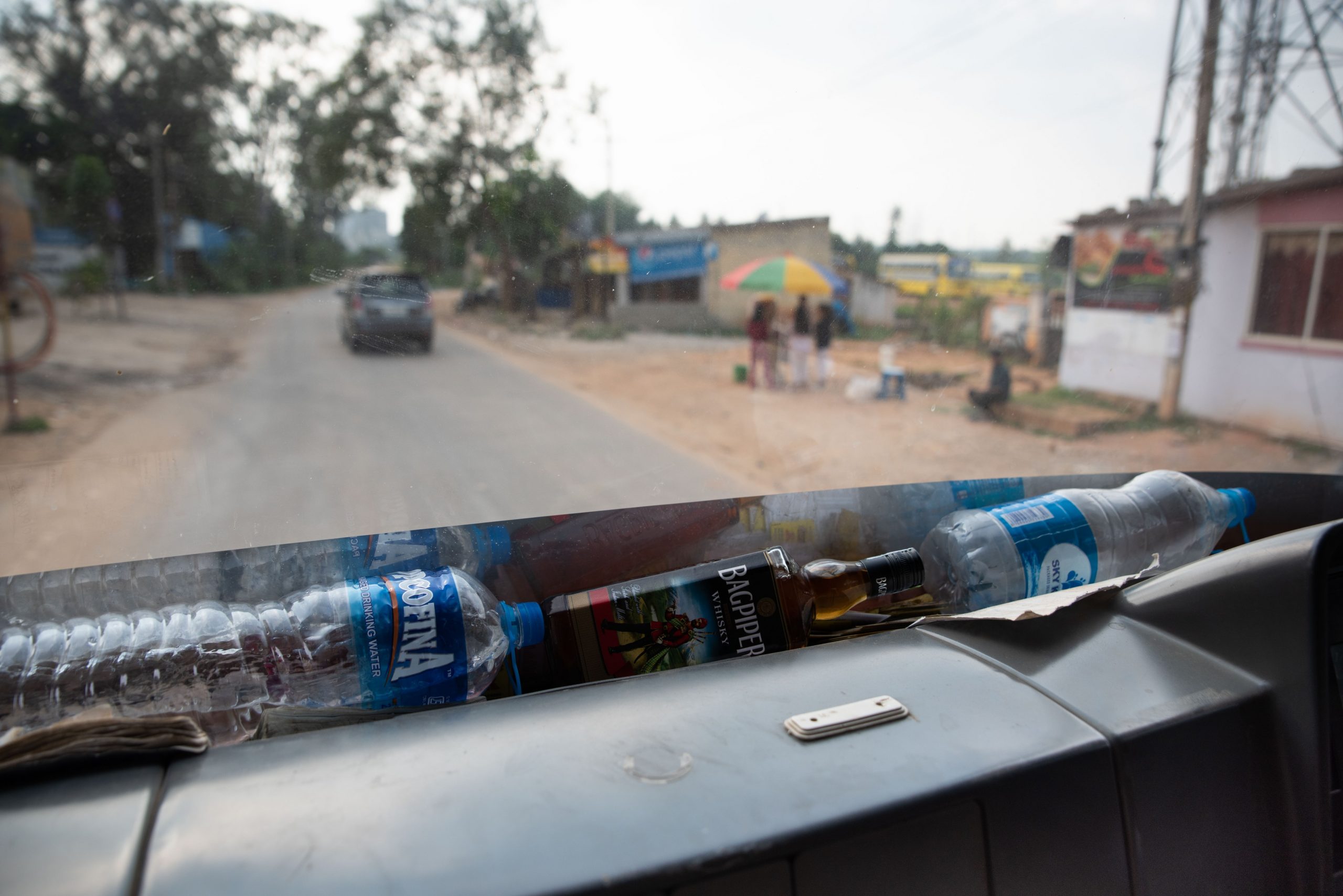
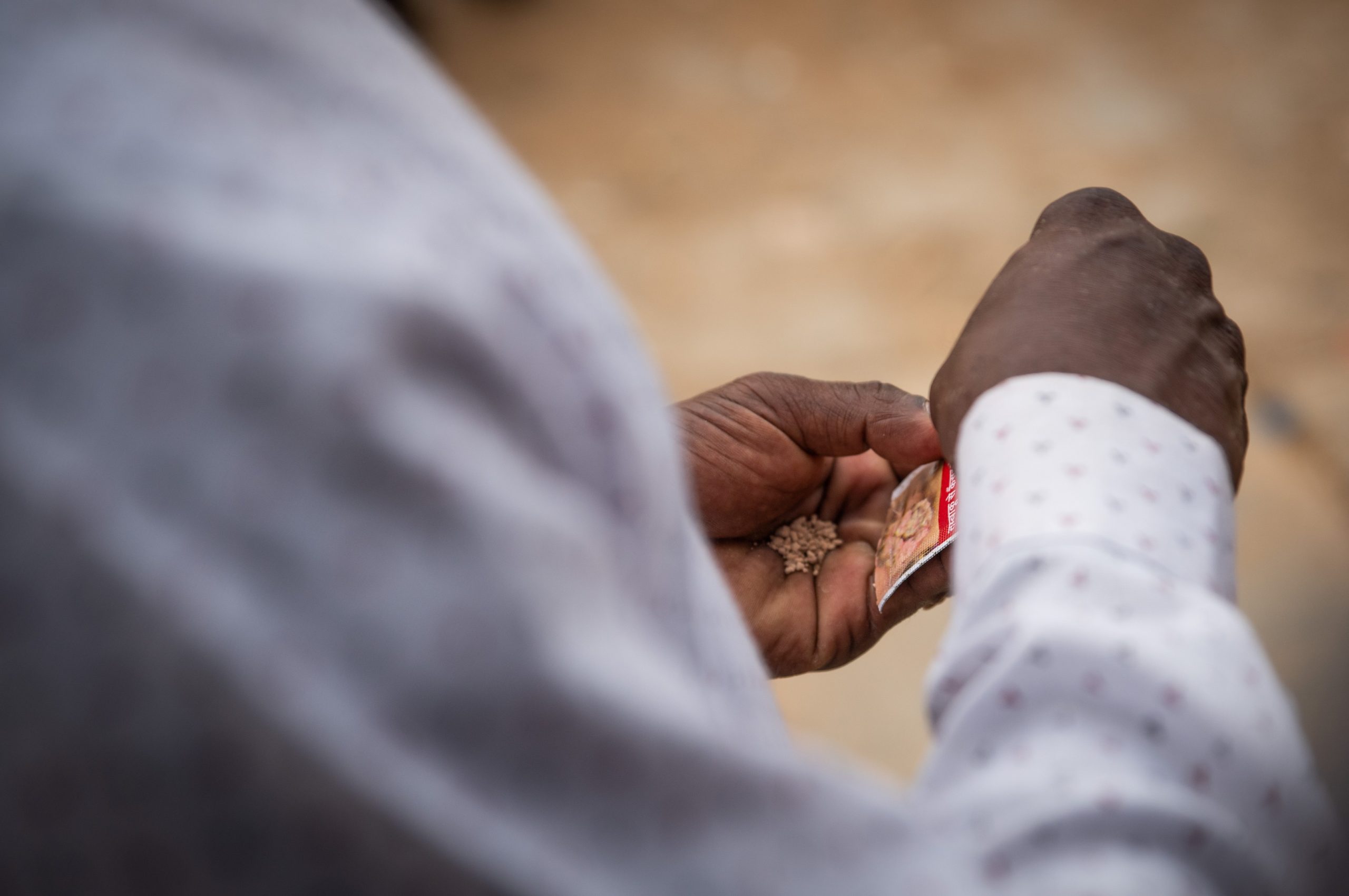
Deepak says that everyone he knows drinks. “I drink even when I don’t work.”
Prabhu says, “But I only drink when I am home. I eat gutkha when I work.”
And Rajesh?
“No. I don’t drink. I just eat gutkha.”
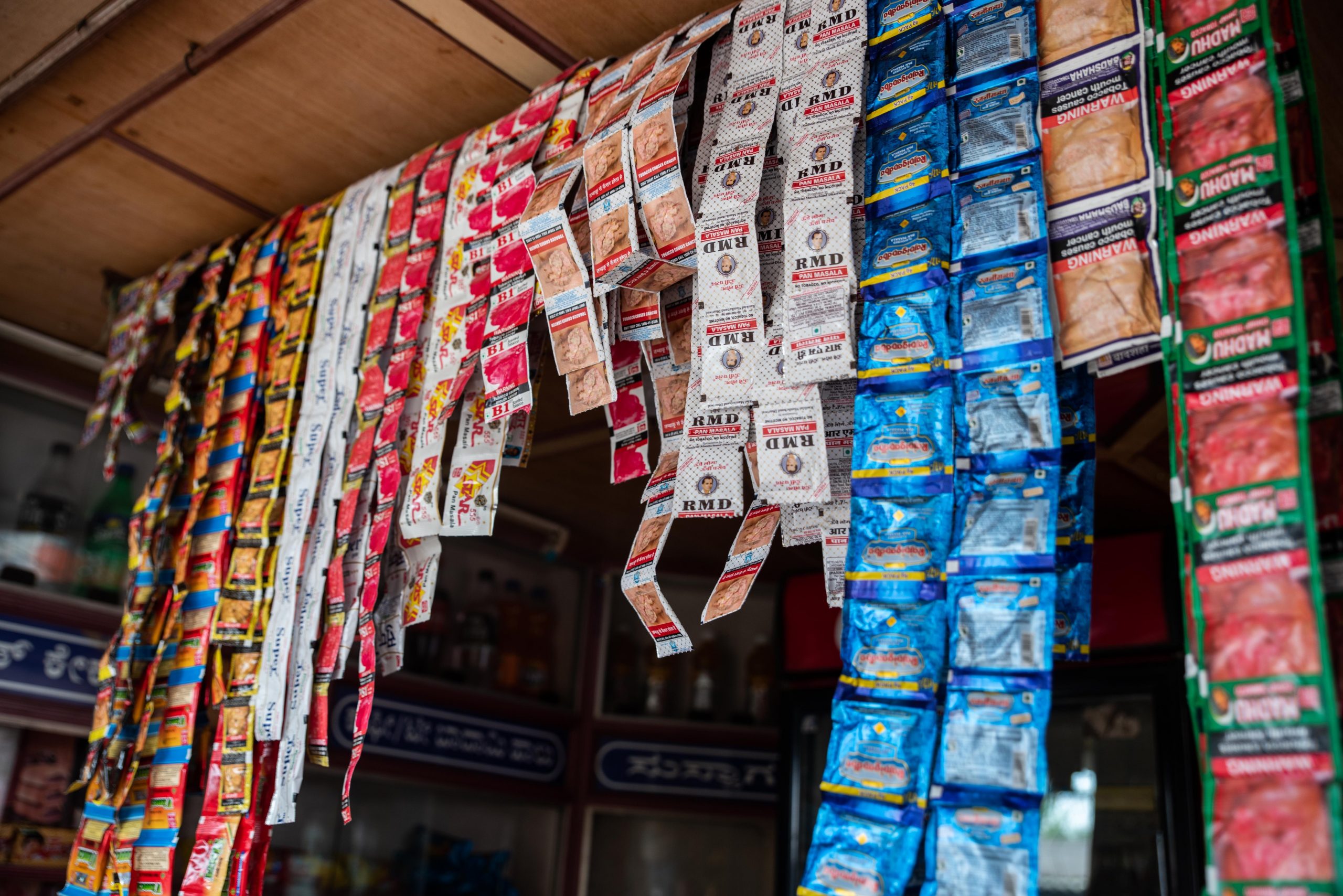
The men are almost done with emptying the fourth load of sludge when a police jeep passes them and stops. Deepak gets out and walks towards the jeep. In a couple of minutes, he is back. “Those people want their share.” He sounds matter-of-fact. “We pay them the mamool4 when they see us or when we go home past the police station.”
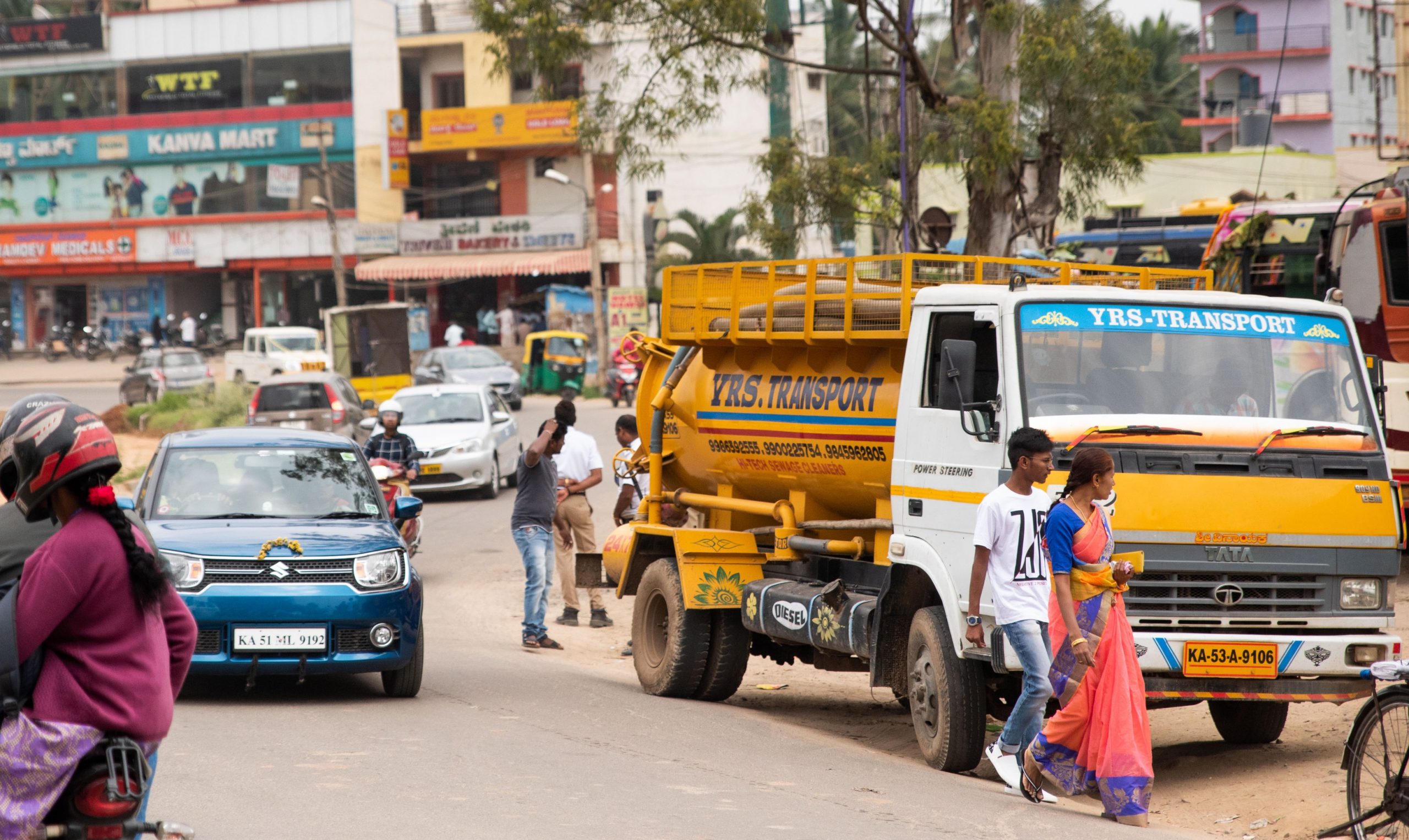

Urgent calls are answered during the day, pretty much all day, the cleaners say, but certain prearranged cleanings are done during the night. Elite hotels, especially, want the septic tanks cleaned at night; they do not want their guests to see or smell the operations. Tonight, the men have been called in by a ‘large, posh’ hotel.
“People pay Rs 10,000 per day to stay in the hotel, and their shit smells just like everybody else’s,” says Prabhu.
He thinks it will be almost 5 am before the men can go home.
Suctioning faecal waste via a hose and pump is progress over manual scavenging (in which feces are cleaned using hand-held tools and carried away in a cart). The three men know this. They also know that the job of working with sludge is still left to a subsection of Dalits. It is risky work; they are disgusted by the waste they handle; they need alcohol and opioids to numb the senses. There is no protection. There are no benefits. But, they agree, there is a small measure of job security.
“The job security we have is our caste. Other castes will not do this work.”
—
Picture courtesy: C S Sharada Prasad
This photo essay was originally published on Economic and Political Weekly’s Engage. It is based on the article ‘It has to be done only at night’: Human waste disposal in Bengaluru by C S Sharada Prasad and Isha Ray.
- This photo-essay is not a product of one specific day in one specific city, but is a composite illustration of the several days and evenings that Sharada Prasad spent with truck operators in Bengaluru, Dharwad, and Guntur. All photographs received informed consent for publication from our interviewees. Deepak, Rajesh and Prabhu are composite characters. No actual named individuals are included in these pictures.
- Soolemaklu, in Kannada, means ‘sons of whores.’
- Gutkha is a mix of areca nuts, seeds, herbs and tobacco. It acts as a mild intoxicant when chewed.
- Mamool, in Kannada, means ‘the usual’.



